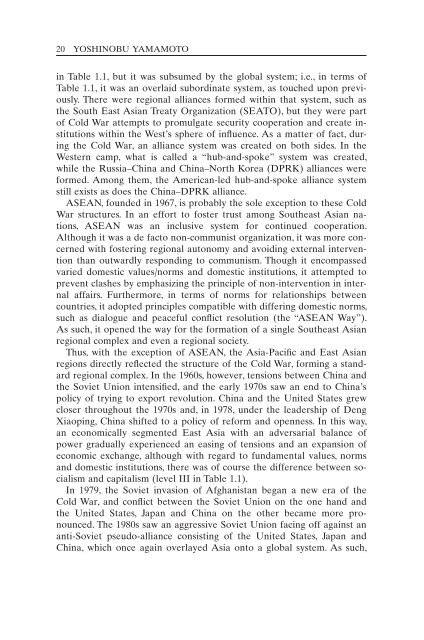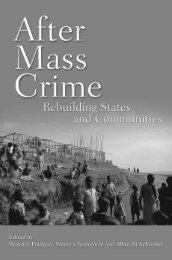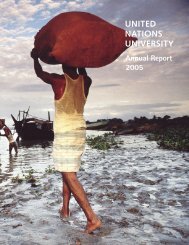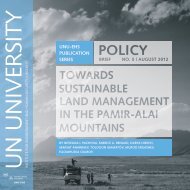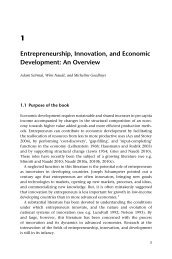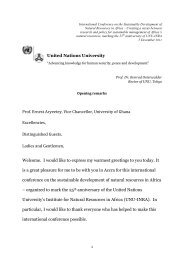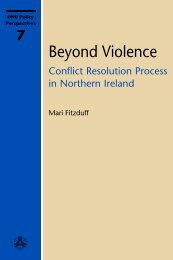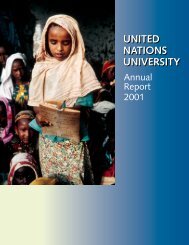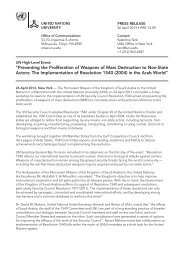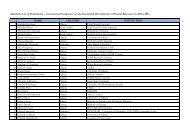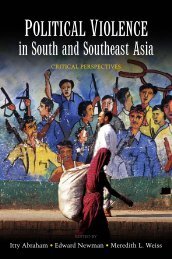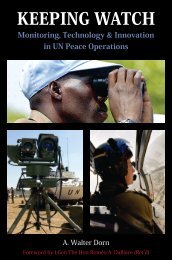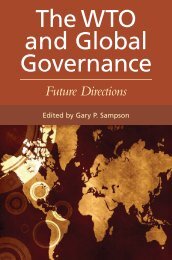Sample Chapter - United Nations University
Sample Chapter - United Nations University
Sample Chapter - United Nations University
Create successful ePaper yourself
Turn your PDF publications into a flip-book with our unique Google optimized e-Paper software.
20 Yoshinobu Yamamoto<br />
in Table 1.1, but it was subsumed by the global system; i.e., in terms of<br />
Table 1.1, it was an overlaid subordinate system, as touched upon previously.<br />
There were regional alliances formed within that system, such as<br />
the South East Asian Treaty Organization (SEATO), but they were part<br />
of Cold War attempts to promulgate security cooperation and create institutions<br />
within the West’s sphere of influence. As a matter of fact, during<br />
the Cold War, an alliance system was created on both sides. In the<br />
Western camp, what is called a “hub-and-spoke” system was created,<br />
while the Russia–China and China–North Korea (DPRK) alliances were<br />
formed. Among them, the American-led hub-and-spoke alliance system<br />
still exists as does the China–DPRK alliance.<br />
ASEAN, founded in 1967, is probably the sole exception to these Cold<br />
War structures. In an effort to foster trust among Southeast Asian nations,<br />
ASEAN was an inclusive system for continued cooperation.<br />
Although it was a de facto non-communist organization, it was more concerned<br />
with fostering regional autonomy and avoiding external intervention<br />
than outwardly responding to communism. Though it encompassed<br />
varied domestic values/norms and domestic institutions, it attempted to<br />
prevent clashes by emphasizing the principle of non-intervention in internal<br />
affairs. Furthermore, in terms of norms for relationships between<br />
countries, it adopted principles compatible with differing domestic norms,<br />
such as dialogue and peaceful conflict resolution (the “ASEAN Way”).<br />
As such, it opened the way for the formation of a single Southeast Asian<br />
regional complex and even a regional society.<br />
Thus, with the exception of ASEAN, the Asia-Pacific and East Asian<br />
regions directly reflected the structure of the Cold War, forming a standard<br />
regional complex. In the 1960s, however, tensions between China and<br />
the Soviet Union intensified, and the early 1970s saw an end to China’s<br />
policy of trying to export revolution. China and the <strong>United</strong> States grew<br />
closer throughout the 1970s and, in 1978, under the leadership of Deng<br />
Xiaoping, China shifted to a policy of reform and openness. In this way,<br />
an economically segmented East Asia with an adversarial balance of<br />
power gradually experienced an easing of tensions and an expansion of<br />
economic exchange, although with regard to fundamental values, norms<br />
and domestic institutions, there was of course the difference between socialism<br />
and capitalism (level III in Table 1.1).<br />
In 1979, the Soviet invasion of Afghanistan began a new era of the<br />
Cold War, and conflict between the Soviet Union on the one hand and<br />
the <strong>United</strong> States, Japan and China on the other became more pronounced.<br />
The 1980s saw an aggressive Soviet Union facing off against an<br />
anti-Soviet pseudo-alliance consisting of the <strong>United</strong> States, Japan and<br />
China, which once again overlayed Asia onto a global system. As such,


